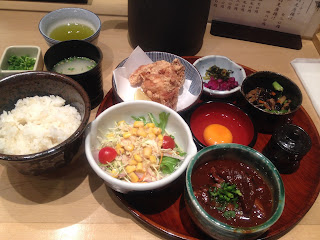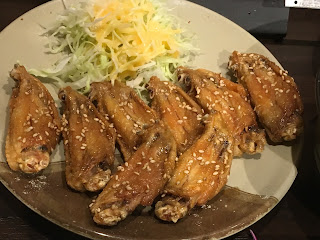Tamago-yaki or rolled omelette is a long-time favourite for any Japanese. The love starts out when mom cooks the omelette and gives it to her children at a young age. I don't know any kid, or adult for that matter, who doesn't like tamago-yaki. Kids like it because it's soft, easy to eat, and either sweet or bursting with dashi flavour (depending on which region of Japan they are brought up in).
Now that bread has become so popular in Japan, sandwiches have gained in popularity too. So, why not put tamago-yaki in a sandwich? Plus Japanese bread is usually on the sweeter side which pairs perfectly with egg. They have been around actually for quite a while, but now there is a new trend for shops to make the rolled egg omelette sandwich unique. Some boast a super fluffy omelette, some make a combination of cucumber and mayo, some use brand quality chicken eggs and others advertise the bread more than the egg itself.
Today I made my own version of tamago-yaki sandwich. I got the idea from watching Cooking With the Chef on the NHK tv on demand website.
My little twist was using whole wheat bread to make it that much healthier, and I used less sugar in the egg because I'm not big on the sweet variety of tamago-yaki. I do think however that the sweeter ones go better with Japanese bread than the savory kind.
 |
| Tamago-yaki sandwich on whole wheat bread |
 |
| Making the rolled egg omelette |
First I made the layered rolled omelette in a special frypan especially made for tamago-yaki.
 |
| Helping it keep its shape |
 |
| Wasabi and mayonnaise spread |
 |
| Nothing went to waste |
Don't worry, I didn't waste the cut off edges; I toasted them and ate it separately as a snack.
Here's another tamagoyaki sandwich I made on a different occasion, this time with matcha mayonnaise (I came to the conclusion that I prefer the wasabi mayo).
Here's another tamagoyaki sandwich I made on a different occasion, this time with matcha mayonnaise (I came to the conclusion that I prefer the wasabi mayo).
The hardest part of the sandwich is getting the rolled omelette right. In Japan, the professional chefs start off with mastering tamago-yaki, making several at the start of each training day. But for this sandwich, I'd say getting it perfect is not a must since it is going to be 'hidden' between the slices of bread. Try it, and put your own twist on it!











